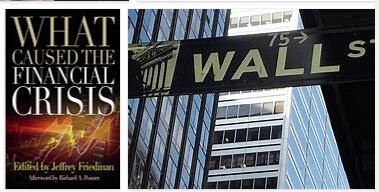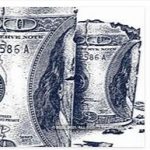A Financial Crisis in the Making Part I
In recent months, words such as economic “crisis”, “collapse” and “depression” have been repeated in the media. A financial crisis has built up. The situation is dramatic, and the consequences of the crisis could be significant for very many people – on all continents. [This is the first of two articles on the financial crisis; the next follows in No. 21.]
- Why did the crisis come now?
- Why have the banks become so unstable?
- How has the crisis developed?
The fall in house prices in the United States is often cited as the cause of the crisis. Probably a factor as to why they’re doing so poorly. An underlying explanation was a set of new financial instruments (see fact 5) created by financial institutions over the past 25 years. At the heart of this we find so-called “securitization” (see fact 4) (here: increase security, reduce risk). Everything from car and mortgage loans to leasing contracts on aircraft and income from record sales was
- collected in packages , and (see composite packages) converted into transferable securities ,
- which was then sold on to investors
Political pressure (from both the Clinton and Bush administration) to provide mortgages to minorities, resale of loans, excessive belief in housing market developments, failing credit ratings and too low interest rates for too long are important elements in the financial crisis (more on that later). But first more about what has happened:
2: A crisis in the making
Banks, financial institutions, equity and pension funds, industrial and insurance companies, certain public actors (for example Norwegian « Terra municipalities ») and not least individuals and others. invested in securities. Many had unrealistic expectations of future income or future own values and financed both consumption and investments with loans. An investment carousel (boom, bubble) was underway.
As is well known, no trees grow in the sky, not even house prices. Interest rates rose, loans became more expensive and borrowers had payment problems. Housing prices in the US thus began to stagnate locally and then fall already in 2006. The scope increased and a crisis came to the surface in the summer of 2007. By then, many people in the US had no longer been able to pay interest and installments on their mortgages. Houses were forcibly sold, and many had to leave their homes.
Gradually, it has all developed into a rolling snowball with increasing debt crisis, lending banks (see facts 1) and investors with major problems, stock markets on a sharp downturn, crisis of confidence, little available credit and thus lack of investment and finally rising unemployment.
3: USA: A wallpaper
In general, it is also important to point out a number of surrounding conditions that together illustrate a United States that was weakly equipped to withstand the crisis that has overwhelmed both Americans and large parts of the rest of the world.
- “Most people” – including the middle class – have experienced stagnant real income for decades. This primarily applied to wage income, as capital income increased. Many were thus ill-equipped when the crisis came.
- According to SHOE-WIKI, the United States has been involved in two extensive and costly wars in Afghanistan (from 2001) and Iraq (from 2003), respectively, wars that devour $ 16-17 billion each month. Among other things, Joseph Stiglitz, Nobel Prize winner in economics, has highlighted this.
- With large annual deficits in the state budget , the US government has since 2000 accumulated a huge debt , about 10 trillion dollars as of November 2008. Not least abroad. A number of other countries do have larger annual deficits and total debt measured as a percentage of GDP, but their economies are not so decisive for the world economy.
- Significant trade deficit – some have warned against this. In many ways, high US consumption (and correspondingly low savings) has been a locomotive for the world economy for several years. This has been partly driven by foreigners’ desire to invest in the USA and partly by low savings in American households. In particular, the second locomotive, the “world factory”, China has benefited from this. The country made large profits from its foreign trade, and the money largely went to investments, including in US government securities. In this way, a kind of mutual dependence has also arisen between the two.
- Ever since the 1980s, politicians have given the financial industry greater freedom, more liberal rules, and less government oversight; the industry has been deregulated . Many believe that deregulation has gone too far; others will oppose such a view.
The boom is by no means just the United States. We have seen it as a long period of strong economic growth (see fact2) the financial crisis ” from the bottom up “] and sharply rising real estate and housing prices in a number of countries, among them Norway.
4: Compound packages – less risk?
The word “securitization” (fact 4) means an attempt to secure oneself. The lenders (banks) then collected many individual loans, each of which was associated with risk, but to varying degrees. By collecting loans in packages, the risk associated with the individual loans – as was the idea – was to offset each other. And lenders would be left with something less risky. The lenders thus took out loans from different geographical areas, from different social groups, and which had been lent for different purposes, and put them together into marketable securities.












